Top Metaverse Platforms: Unique features and how to access them
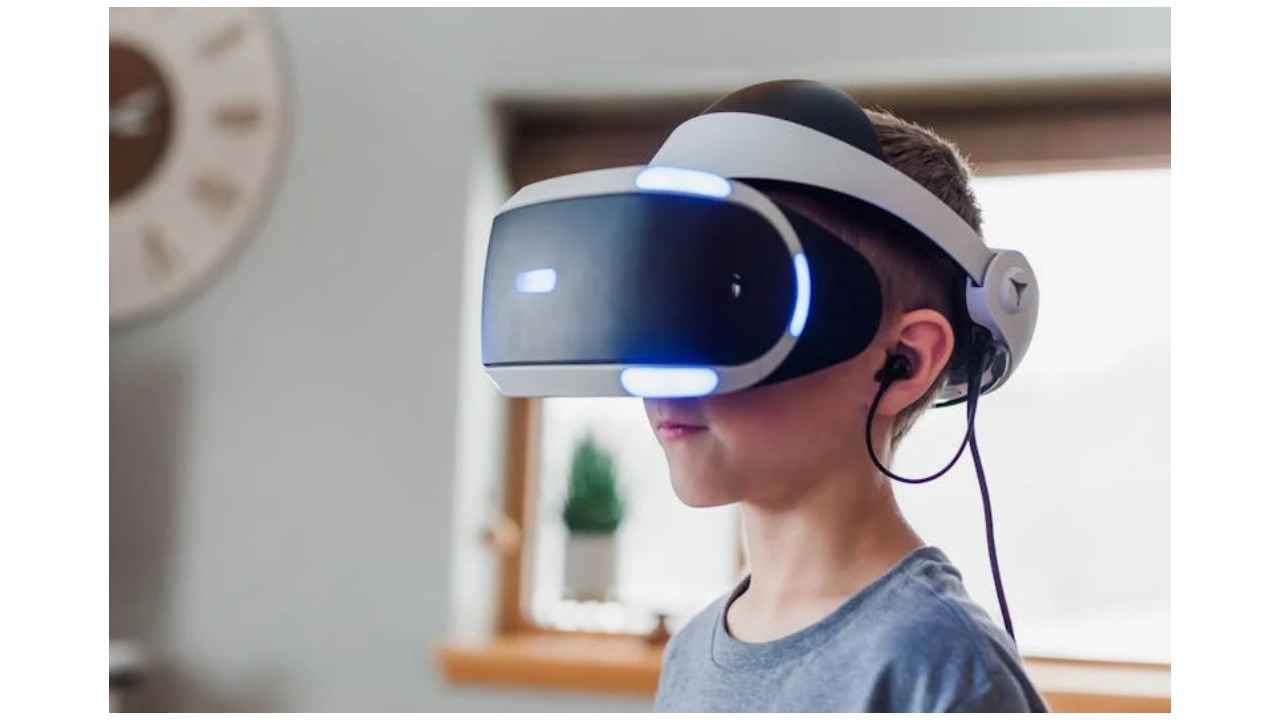
Dive into various Metaverse platforms, discovering how to select, customise, and maximise your virtual spaces. We try to provide an overview of the various Metaverse platforms and environments, guiding readers through the process of choosing, setting up, and engaging with these digital spaces. It focuses on popular platforms, customisation of virtual spaces, and the exploration of user-generated content, offering actionable insights for a fulfilling Metaverse experience.
 Survey
SurveyWhat are some of the most popular metaverse platforms? – Unique features and how to access them
Here’s a list of some of the most prominent Metaverse platforms, providing insights into their unique features, communities, and the experiences they offer. This should allow you to navigate the diverse landscape of the Metaverse, enabling you to find the platforms that best suit your interests and needs.
1) Decentraland
Decentraland is a blockchain-based virtual world where users can buy, build on, and monetize plots of virtual land. It’s known for its decentralised economy, powered by its cryptocurrency, MANA.
- How to Access: Access Decentraland via its website using a web browser like Chrome or Firefox. Create an account, set up a digital wallet (like MetaMask), and you’re ready to explore.
- Unique Features: Decentraland offers a marketplace for trading virtual goods, land, and experiences. It’s also a platform for digital art and NFT exhibitions.
2) Roblox
In case you haven’t heard of it before, Roblox is a platform that allows users to create and play games made by other users. It’s popular among younger audiences and fosters creativity and community.
- How to Access: Download the Roblox application on PC, Mac, iOS, Android, or Xbox. Create an account to start playing games or use Roblox Studio, a game development tool, to create your own games.
- Unique Features: Roblox’s unique selling point is its usergenerated content. It also has its own virtual currency, Robux, used for in-game purchases and trading.
3) VRChat
One of the most unique Metaverse apps out there, VRChat is a virtual reality social platform. It allows users to create and explore virtual worlds, socialise with others, and participate in a variety of interactive experiences.
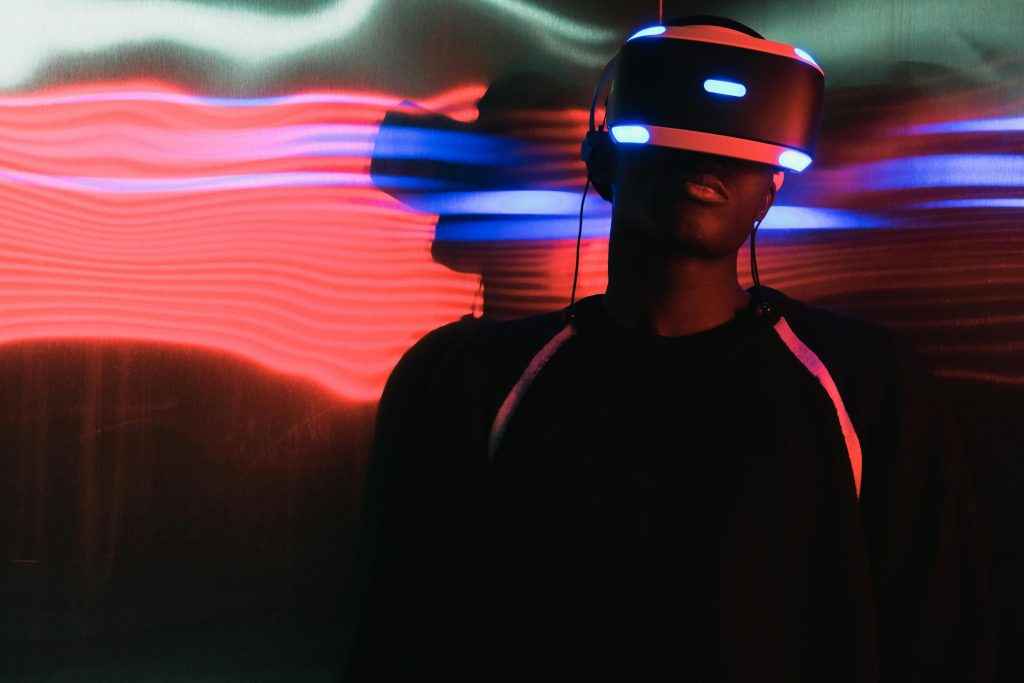
- How to Access: Download VRChat on platforms like Steam or Oculus Store. It’s accessible via VR headsets like the Oculus Rift or HTC Vive, as well as in desktop mode without VR.
- Unique Features: VRChat is known for its expressive avatar customization, interactive world-building tools, and a vibrant community that hosts events and meetups.
4) The Sandbox
The Sandbox is a blockchain-based virtual world that allows users to create, own, and monetize their gaming experiences using the platform’s utility token, SAND.
- How to Access: Access The Sandbox by creating an account on its website. To fully engage with its economy, users need a digital wallet like MetaMask.
- Unique Features: The Sandbox stands out for its focus on user-generated content and gaming experiences, as well as its integration with blockchain technology for secure asset ownership.
5) Second Life
One of the earliest Metaverse platforms before even the term was popularised, Second Life is a vast virtual world where users can socialise, create, and trade. It supports a wide range of activities, from business meetings to educational courses.
- How to Access: Download the Second Life viewer from its website and create an account. Once set up, users can customise their avatars, purchase virtual land, and explore various environments.
- Unique Features: Second Life’s robust economy, where users trade in Linden Dollars (convertible to real money), and its extensive customization options for avatars and environments are noteworthy.
6) Minecraft
One of the most popular games in the world, Minecraft is not typically categorised as a Metaverse platform but has evolved into one. It’s a sandbox game that allows players to build and explore virtual worlds.
- How to Access: Purchase and download Minecraft from its official website or game stores. It’s available on multiple platforms, including PC, consoles, and mobile devices.
- Unique Features: Minecraft’s open-world, block-building mechanics make it a tool for creativity. Its multiplayer mode allows for community-driven projects and social interactions.
Each of these platforms offers a unique window into the Metaverse, catering to a range of interests from gaming and socialising to creating and trading. Understanding the nuances of each platform can help readers identify where they might want to start or expand their Metaverse journey.
How to setup and customise your virtual space in the metaverse?
Creating and customising a personal or professional space in the Metaverse is a fundamental aspect of your digital presence. This section provides a comprehensive guide on how to set up and personalise your virtual space across different platforms, using various tools and applications.
1) Deciding on a Platform for Your Space
- Consider Your Purpose: Choose a platform based on your intended use – socialising, business, gaming, or creative expression. For example, The Sandbox or Minecraft for creative building, Second Life or Decentraland for social and business environments.
- Platform Research: Understand each platform’s features and limitations. Visit community forums or watch tutorials to get insights into what’s possible in each space.
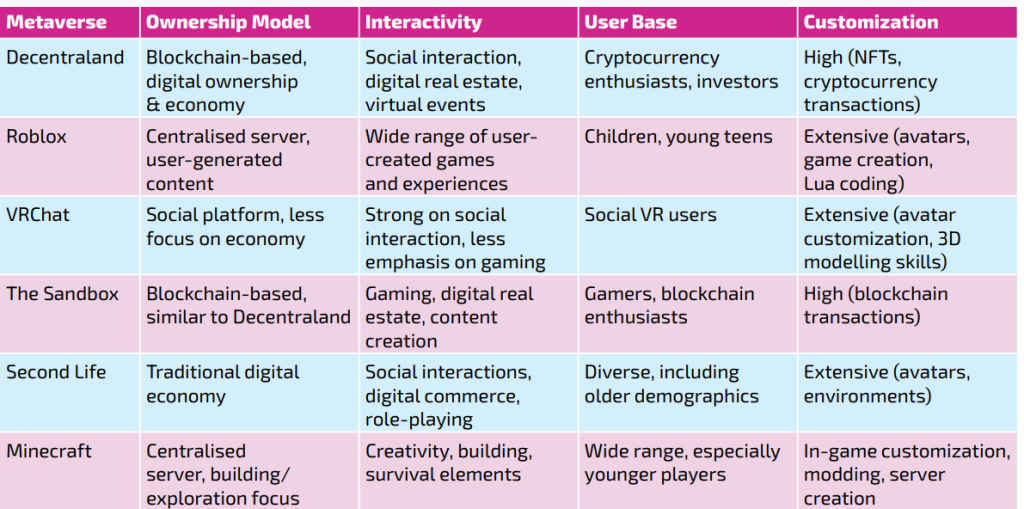
Similarities Across Platforms
- Social Interaction: Emphasis on community and social engagement.
- Customization: Varied levels of avatar and environment customization.
- User-Generated Content: Encouragement or reliance on user-created content.
Differences Across Platforms
- Ownership Model: Variance between blockchain-based and traditional models.
- Target Audience: Each platform caters to different age groups and interests.
- Economic Model: Differences in handling in-game economies, from real money and cryptocurrency to in-game currencies
2) Initial Setup and Customization
- Creating Your Space: Start by selecting a location or a plot of land in platforms like Decentraland or The Sandbox. In games like Minecraft, choose a server or create a new world.
- Basic Customization Tools: Utilise the platform’s built-in tools for initial customization. Second Life, for instance, provides extensive tools for shaping landscapes, constructing buildings, and adding decorations.
3) Advanced Customization with External Tools
- 3D Modeling Software: Use software like Blender or Autodesk Maya to create custom models and import them into your space if the platform allows. This is especially relevant for platforms like Second Life or Roblox.
- Texturing and Design Tools: Adobe Photoshop or Substance Painter can be used for creating custom textures and designs for your virtual environment.
4) Interactivity and Functionality
- Scripting and Coding: Learn basic scripting to add interactivity to your space. Platforms like Second Life use scripting languages (like Linden Scripting Language) to add functionality to objects.
- Game Development Tools for Interactivity: Use tools like Unity or Unreal Engine to create interactive experiences in platforms that support advanced game mechanics, like Roblox or The Sandbox.
5) Social and Community Features
- Setting Up Social Spaces: Design areas for social interaction, such as meeting rooms or event spaces, particularly in platforms like VRChat or AltspaceVR.
- Community Engagement Tools: Implement features like bulletin boards, event calendars, or interactive games to engage visitors. Tools like Discord can also be integrated for community building.
6) Maintaining and Updating Your Space
- Regular Updates: Keep your space fresh and engaging with regular updates. This can include seasonal decorations, new content, or updated functionality.
- Feedback and Iteration: Gather feedback from visitors or community members and use it to improve and iterate on your space.
The best ways to utilise user-generated content and experiences in the metaverse
The Metaverse is rich with user-generated content and experiences, offering endless opportunities for exploration and discovery. We guide you through the process of finding and engaging with this content, utilising various tools and apps, and highlights the diverse range of experiences available across different platforms.
1) Identifying Interesting Content
- Platform Exploration Tools: Use the search and discovery features within each platform to find content. For example, Roblox has a ‘Discover’ tab, and VRChat offers a world search function to explore user-created rooms.
- Community Recommendations: Participate in community forums or social media groups related to your chosen platform. Platforms like Second Life and Minecraft have dedicated forums where users share and discuss popular content.
2) Using External Discovery Tools
- Metaverse Aggregators: Websites like VRScout or The Metaverse Journal often curate and review new and popular content across various platforms, providing an easy way to discover quality experiences.
- Social Media Platforms: Platforms like YouTube, Reddit, or TikTok can be valuable resources for discovering user-generated content. Content creators often share their creations and tutorials on these platforms.
3) Participating in Virtual Events and Activities
- Event Calendars: Many platforms have event calendars listing upcoming activities. For instance, AltspaceVR and VRChat regularly host various events which can be found on their websites or in-app calendars.
- In-Platform Event Participation: Join events like virtual concerts, art exhibitions, or meetups. Platforms like The Sandbox and Decentraland often host such events, offering unique experiences.
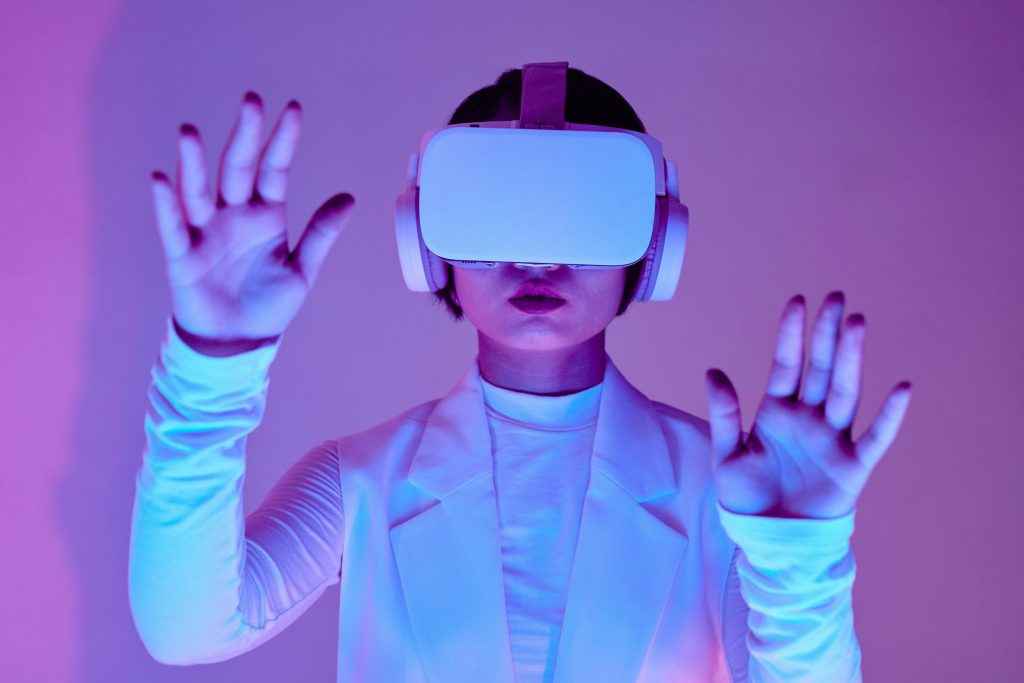
4) Engaging with Interactive and Educational Content
- Educational Platforms: Explore educational content in platforms like Minecraft Education Edition, which offers lessons and interactive experiences.
- Interactive Experiences: Engage with interactive storytelling or puzzle rooms in platforms like VRChat, which offers a variety of user-created interactive experiences.
5) Creating and Sharing Your Own Content
- Content Creation Tools: Learn to use platform-specific creation tools, like Roblox Studio for Roblox or the Sandbox Game Maker for The Sandbox, to create your own content.
- Sharing and Promoting Your Content: Utilise social media or the platform’s own sharing tools to promote your content. You can also join creator communities within the platform for feedback and collaboration.
6) Safety and Community Standards
- Respecting Community Guidelines: Familiarise yourself with each platform’s community standards and content guidelines to ensure a safe and respectful experience.
- Reporting and Feedback Mechanisms: Use reporting tools provided by the platforms to report inappropriate or harmful content. Platforms like Second Life and Roblox have mechanisms for community reporting.
By exploring user-generated content and experiences in the Metaverse, you can uncover a world of creativity and innovation, ranging from fun and interactive games to educational and immersive environments. This exploration not only enhances your own experience but also supports the creators within these vibrant communities.
How to participate in the virtual economies inside the metaverse?
The Metaverse offers diverse virtual economies, allowing users to engage in various economic activities, from trading virtual goods to investing in digital real estate. Here’s an overview of how to navigate and participate in these virtual economies, highlighting the tools, platforms, and strategies needed for effective engagement.
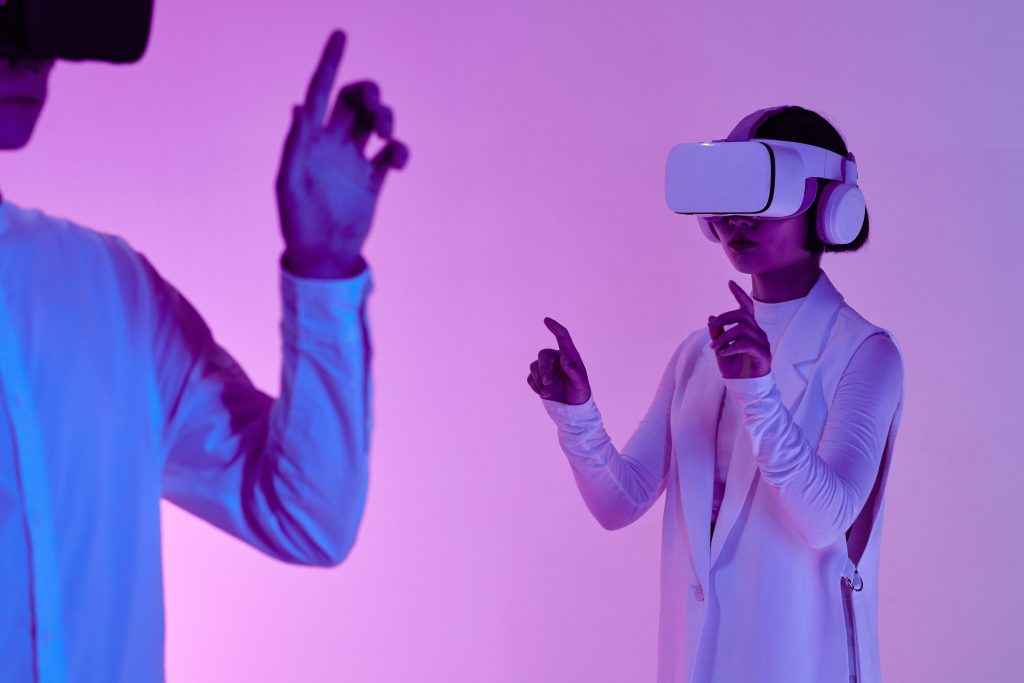
1) Understanding Virtual Currencies
- Platform-Specific Currencies: Familiarise yourself with the virtual currencies used in different platforms. For example, Roblox uses Robux, while Decentraland operates with MANA.
- Currency Exchange Tools: Use tools like CoinMarketCap or platforms like OpenSea to monitor and exchange cryptocurrencies, particularly relevant for blockchain-based platforms.
2) Buying and Selling Virtual Goods
- Marketplaces: Utilise in-platform marketplaces to buy and sell virtual goods. Second Life’s Marketplace and Roblox’s Avatar Shop are prime examples where users can trade a wide range of items.
- NFT Platforms: For platforms that support NFTs, such as Decentraland or The Sandbox, use NFT marketplaces like Rarible or OpenSea to buy, sell, or trade unique digital assets
3) Investing in Virtual Real Estate
- Real Estate Platforms: Explore virtual real estate investment opportunities in platforms like Decentraland or The Sandbox, where users can buy, sell, or rent virtual land.
- Real Estate Tools: Use tools provided by the platforms for real estate transactions, such as The Sandbox’s Map to view available land parcels.
4) Earning Income in the Metaverse
- Content Creation and Monetization: Platforms like Roblox and VRChat allow creators to monetize their games or experiences. Understand the platform’s monetization policies and use their tools to generate revenue.
- Freelance Opportunities: Platforms like Upwork or Fiverr offer opportunities to provide Metaverse-related services, such as 3D modelling, virtual event planning, or avatar design.
5) Participating in Virtual Economy Events
- Event Participation: Engage in trading events or contests organized within the Metaverse platforms. For instance, Decentraland occasionally hosts events where users can showcase and trade their digital creations.
- Investment Games: Participate in investment simulation games or challenges available in certain Metaverse environments, which can provide a learning experience in virtual economics.
6) Understanding Legal and Ethical Considerations
- Legal Knowledge: Stay informed about the legal aspects of virtual economies, especially regarding cryptocurrency and NFT transactions.
- Ethical Trading Practices: Engage in ethical trading practices and be aware of the impact of your economic activities on the virtual community and environment.
By engaging with the virtual economies of the Metaverse, users can experience a unique aspect of digital interaction, combining elements of traditional economic principles with the innovative potential of virtual worlds. This participation not only provides opportunities for economic gain but also contributes to the vibrancy and diversity of the Metaverse’s economic landscape.
What is the road into the metaverse?
In conclusion, navigating the Metaverse is a multifaceted journey, blending creativity, community, and commerce. From selecting the right platform and customising your virtual spaces to participating in virtual economies, the possibilities are vast. Each Metaverse platform offers a unique set of tools and experiences tailored to different interests, whether it’s gaming, socialising, creating, or investing.
By familiarising yourself with the customisation options, exploring user-generated content, and understanding the intricacies of virtual economies, you can fully immerse yourself in these digital worlds. The Metaverse is more than just a collection of virtual spaces—it’s a new frontier of human interaction and innovation, waiting to be explored and shaped by its users. As this space continues to evolve, staying informed and engaged will ensure a rewarding and enriching experience in this emerging digital ecosystem.
You can access more articles of the series here:
1. What is the Metaverse? Applications, Importance, and How It Works
2. How to create avatars and virtual personas in the metaverse?
3. Metaverse 101: How to Socialise and Network in the Metaverse
4. How to Attend Virtual Events, Conferences and Meetups in Metaverse
5. How to Earn Money in Metaverse: Guide to Virtual Currencies, NFTs, Virtual Real Estate
6. How to Navigate Ethical Considerations in Metaverse
7. How will Metaverse Evolve: Predictions on Future of Metaverse
Team Digit
Team Digit is made up of some of the most experienced and geekiest technology editors in India! View Full Profile